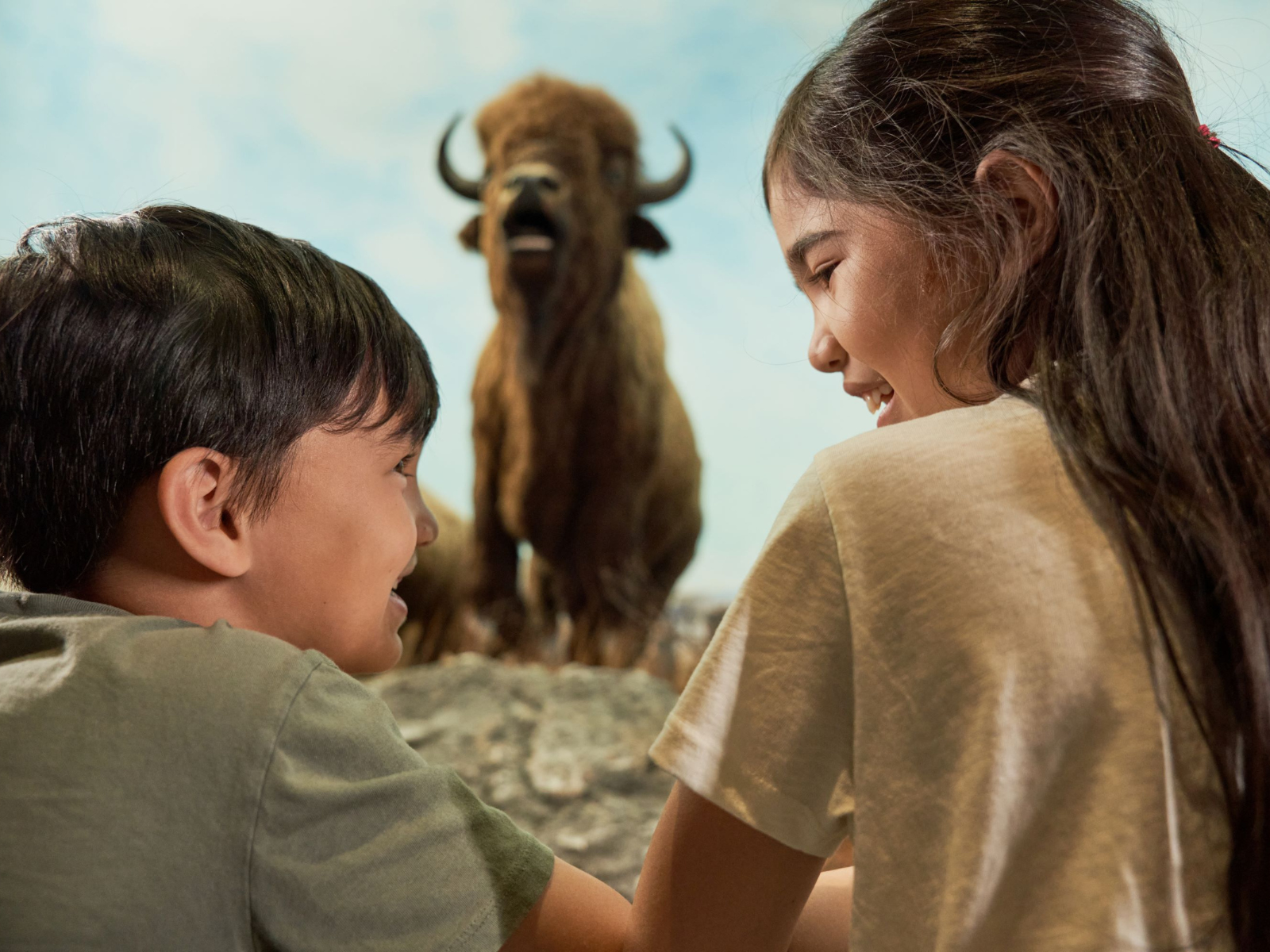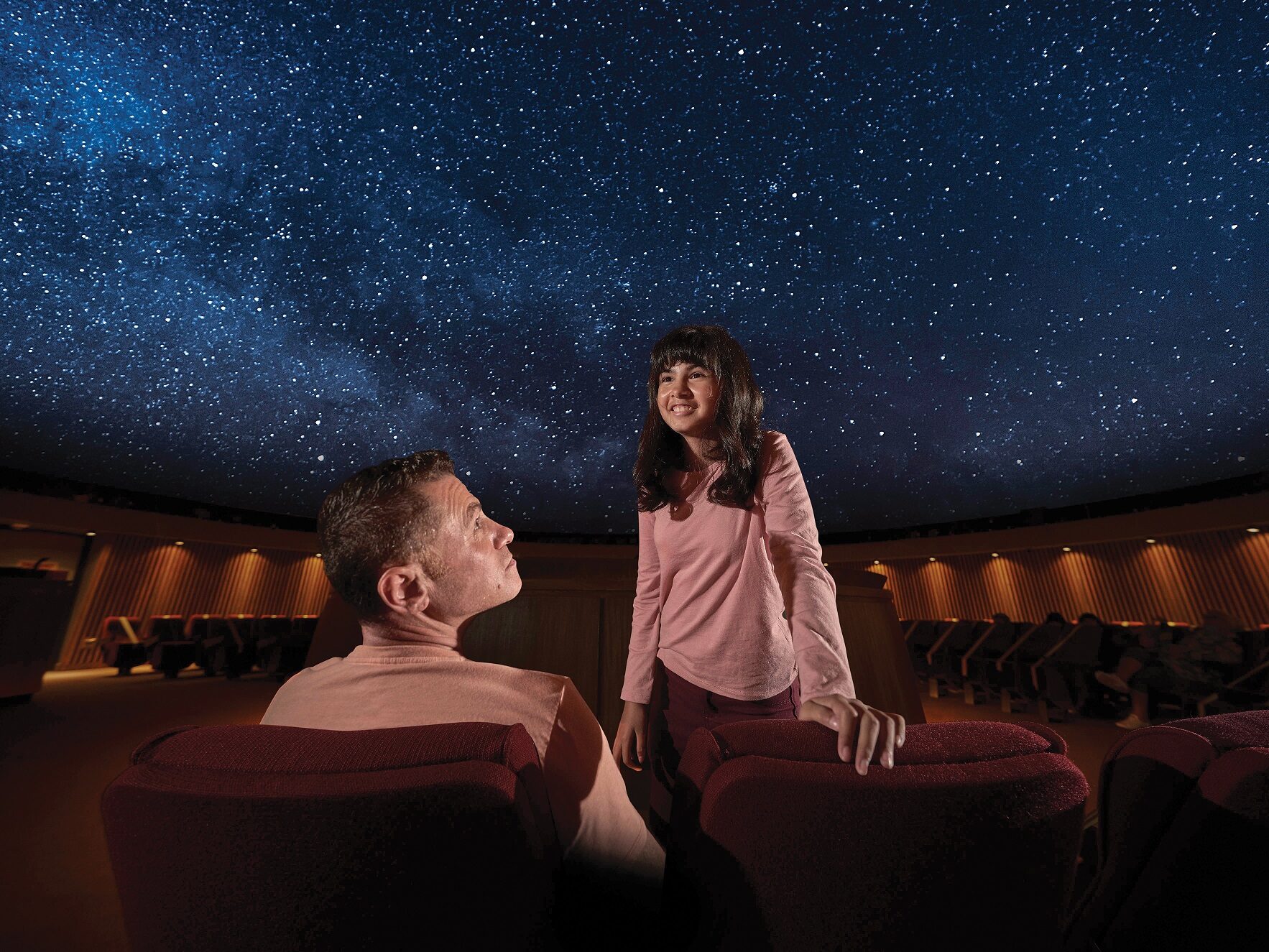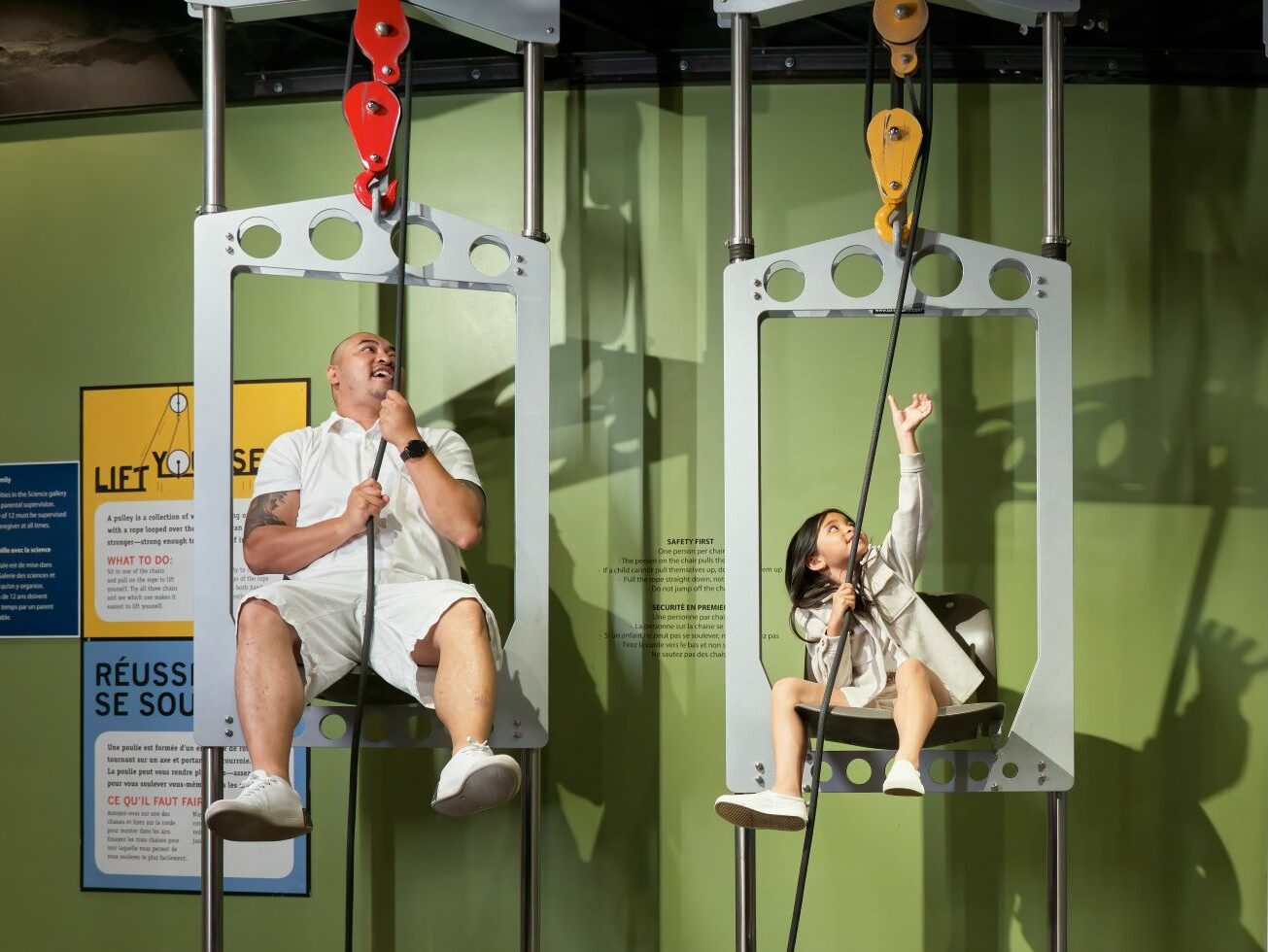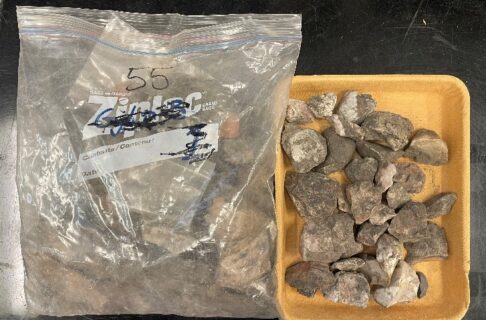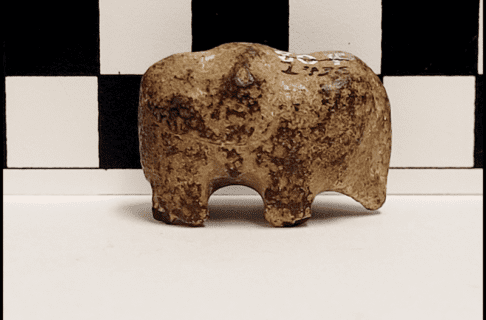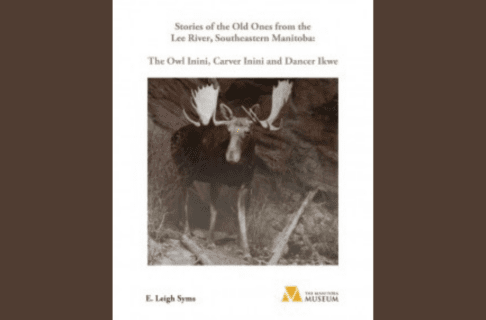Posted on: Thursday March 22, 2012
By Kevin Brownlee, past Curator of Archaeology
Over the course of the next 6 days all efforts were on completing the Birch Bark canoe. Each morning I would get up at 6:00 am and review my notes and look at the canoe in order to see if they were complete. Once I updated my notes, and had coffee and breakfast, work would start on the canoe.
Since Myra and I were both beginners, we were given the task of sewing all the seams together with the 500 feet of finished spruce roots. While we worked on that, Grant focused his attention on the wooden structure of the canoe including the inwales, outwales, gunwale caps, thwarts, ribs, planking, headboard, and stem pieces.
All photographs from this post are the property of Kevin Brownlee (personal collection).
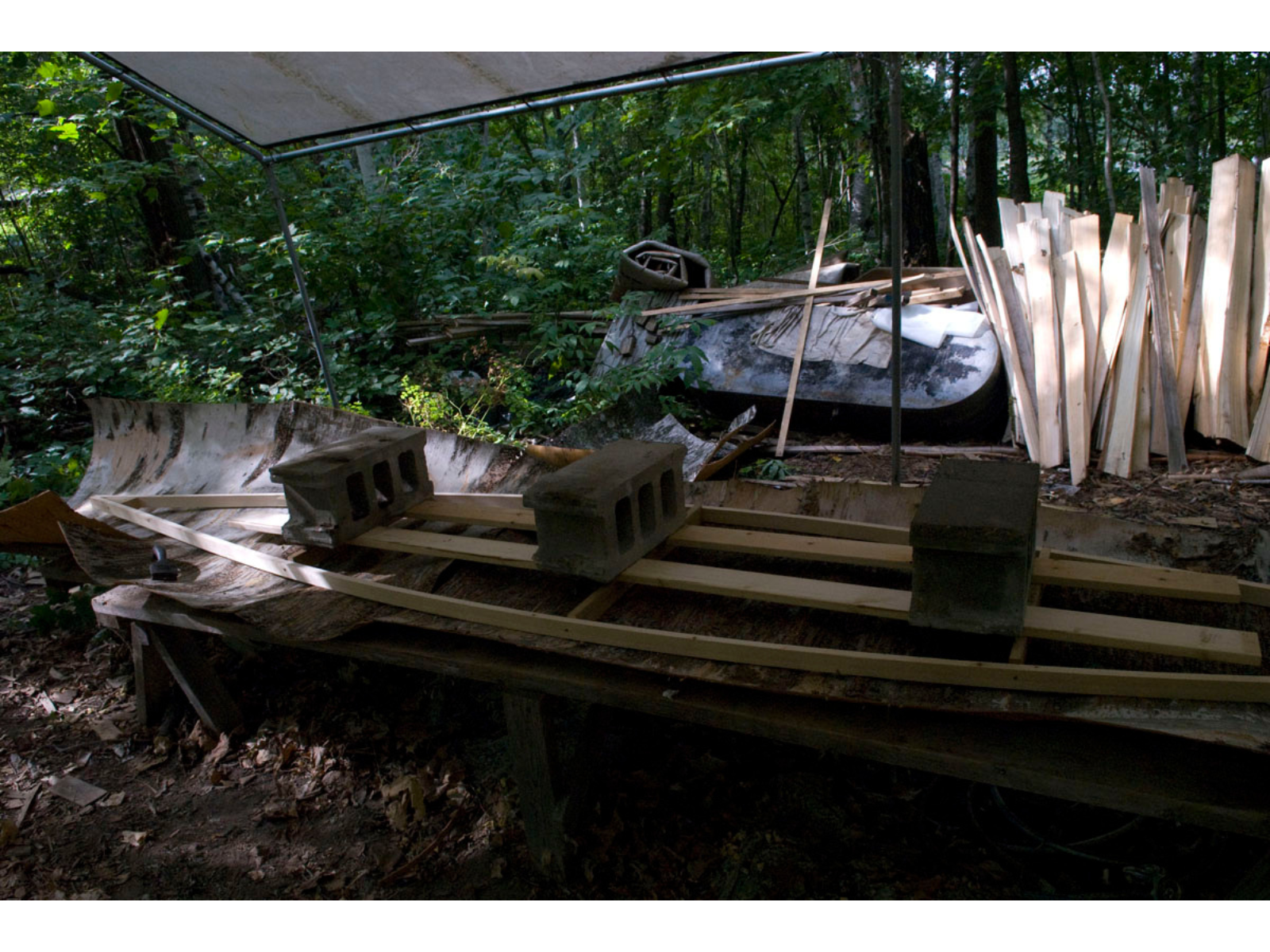
Weighing down the bark.
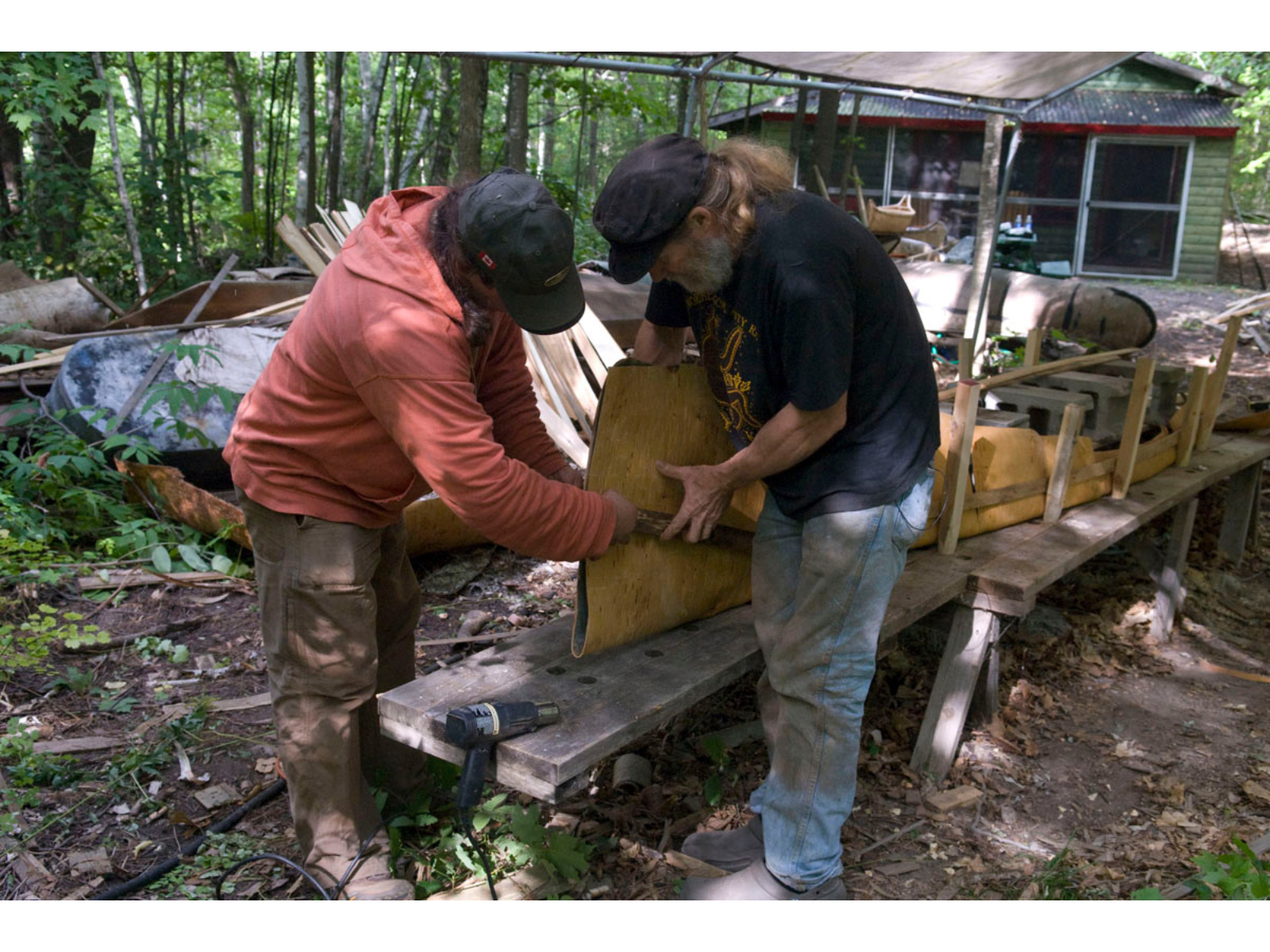
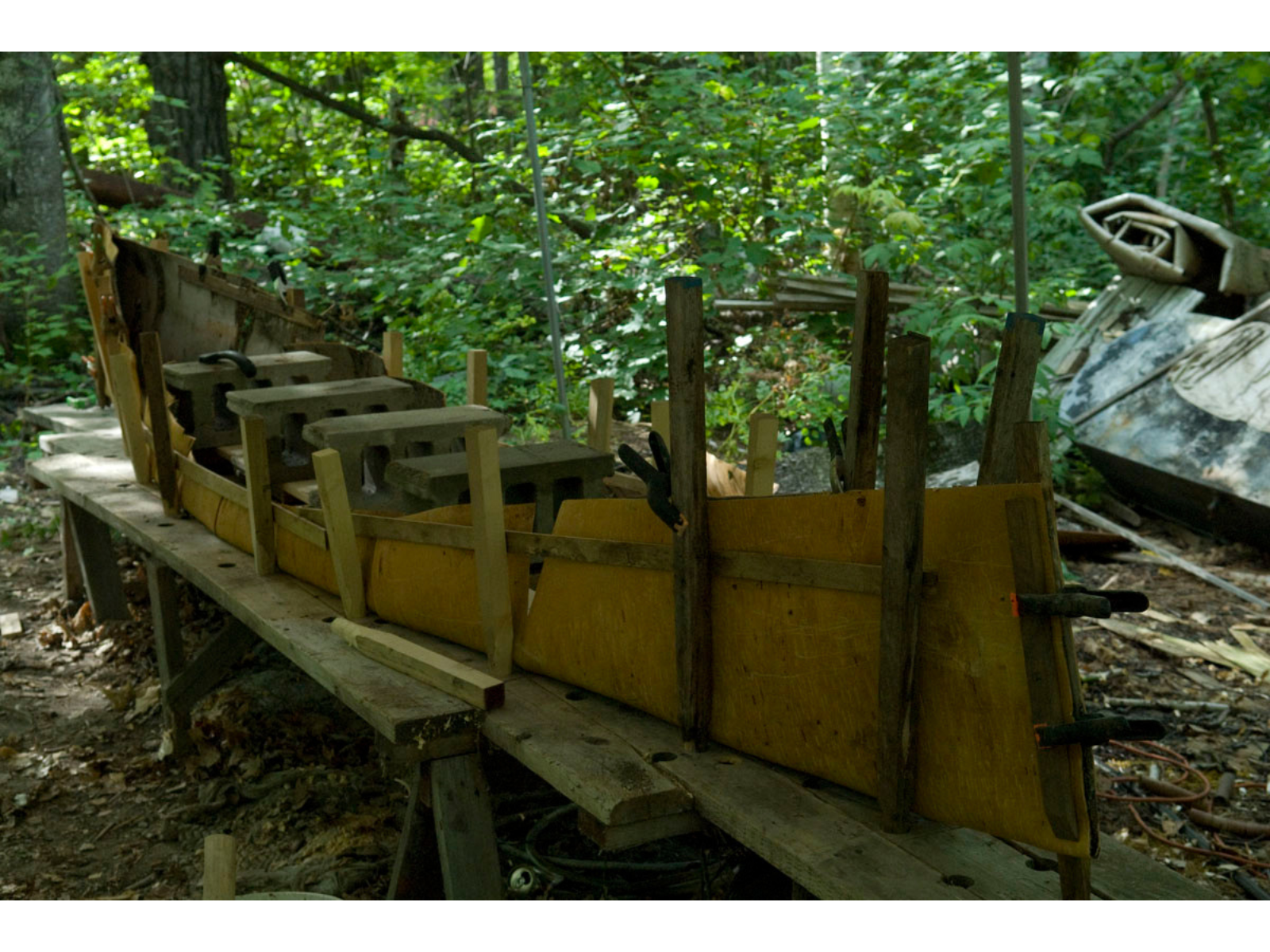
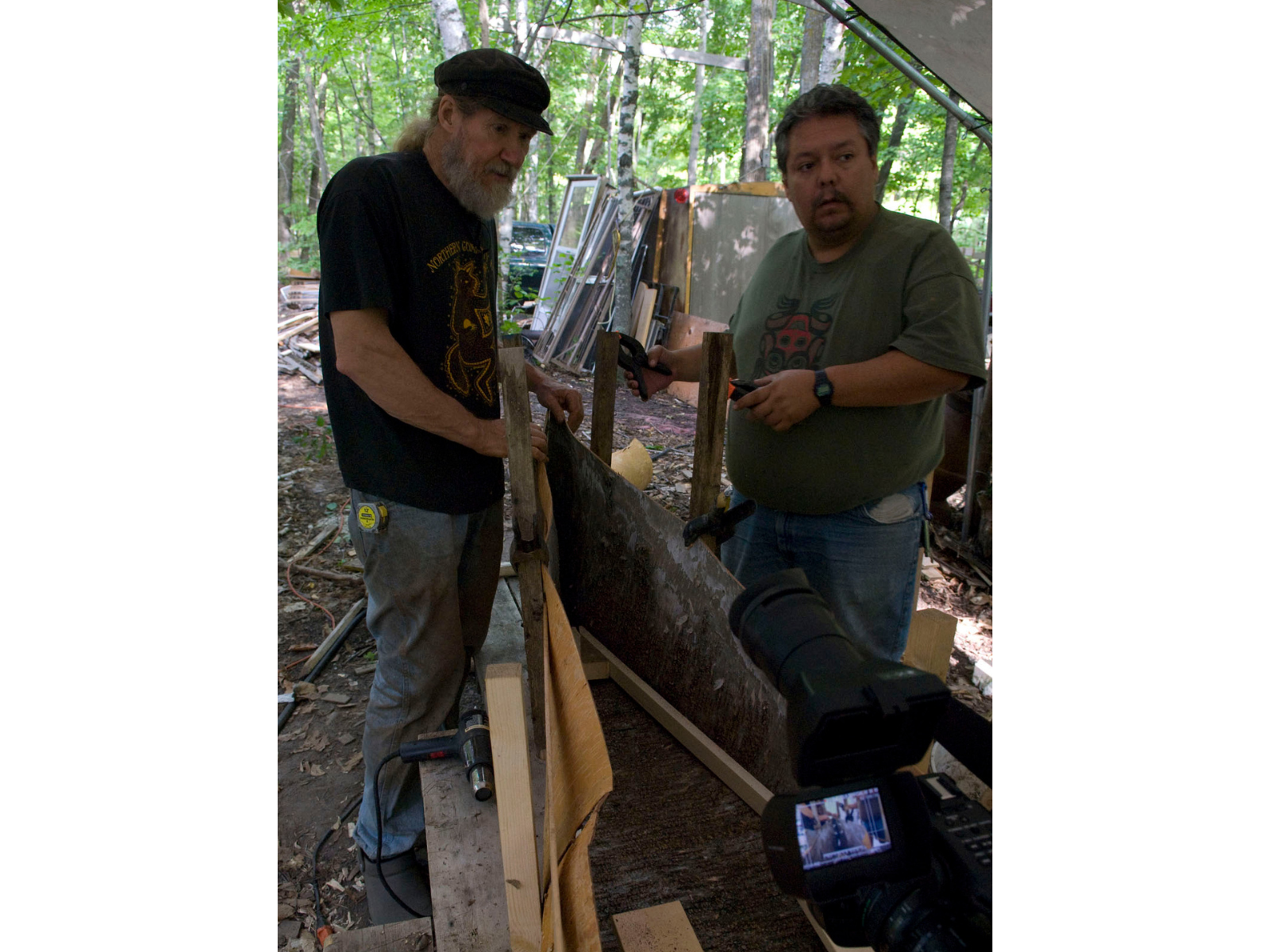
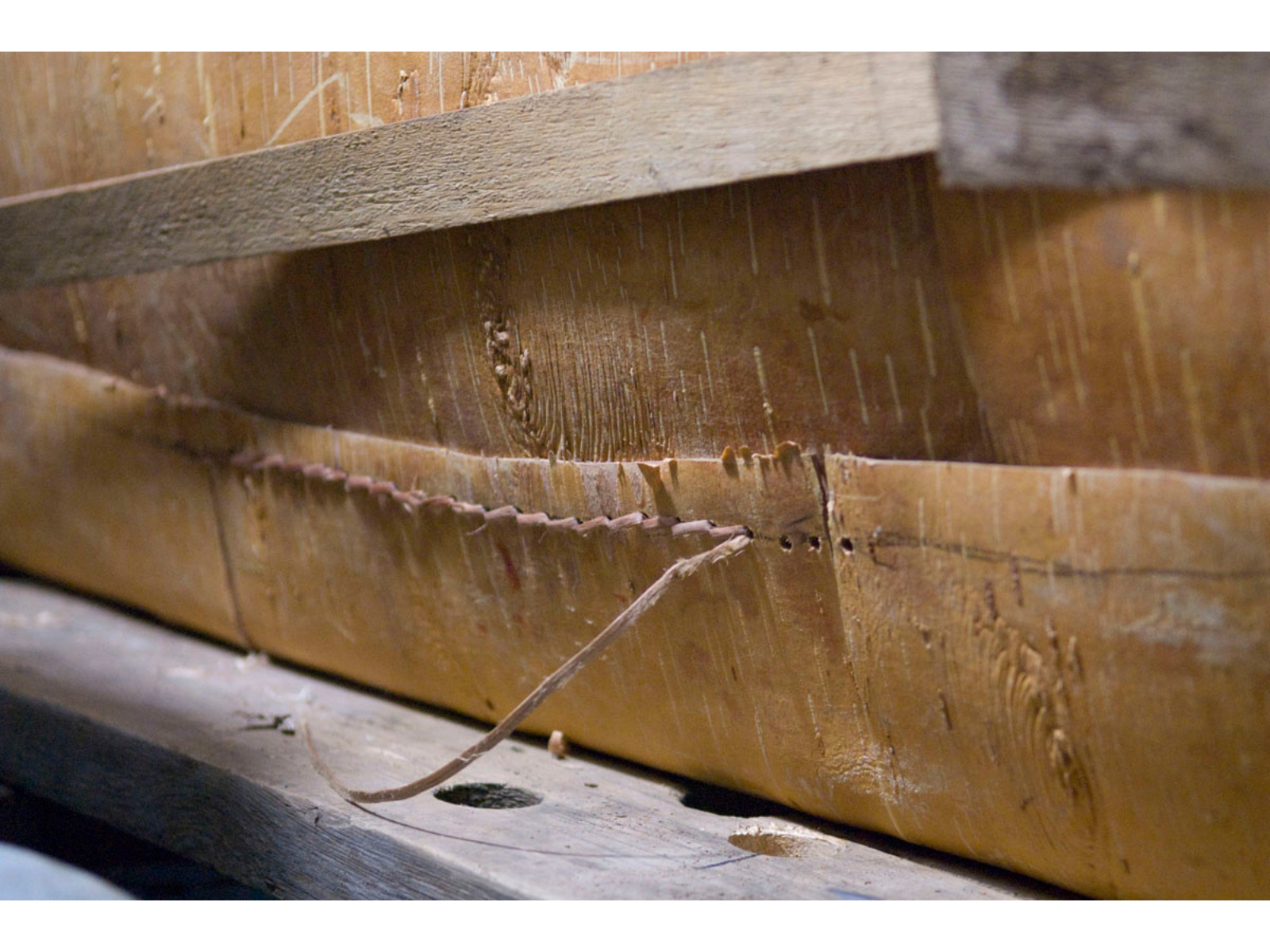
Sewing with spruce roots.
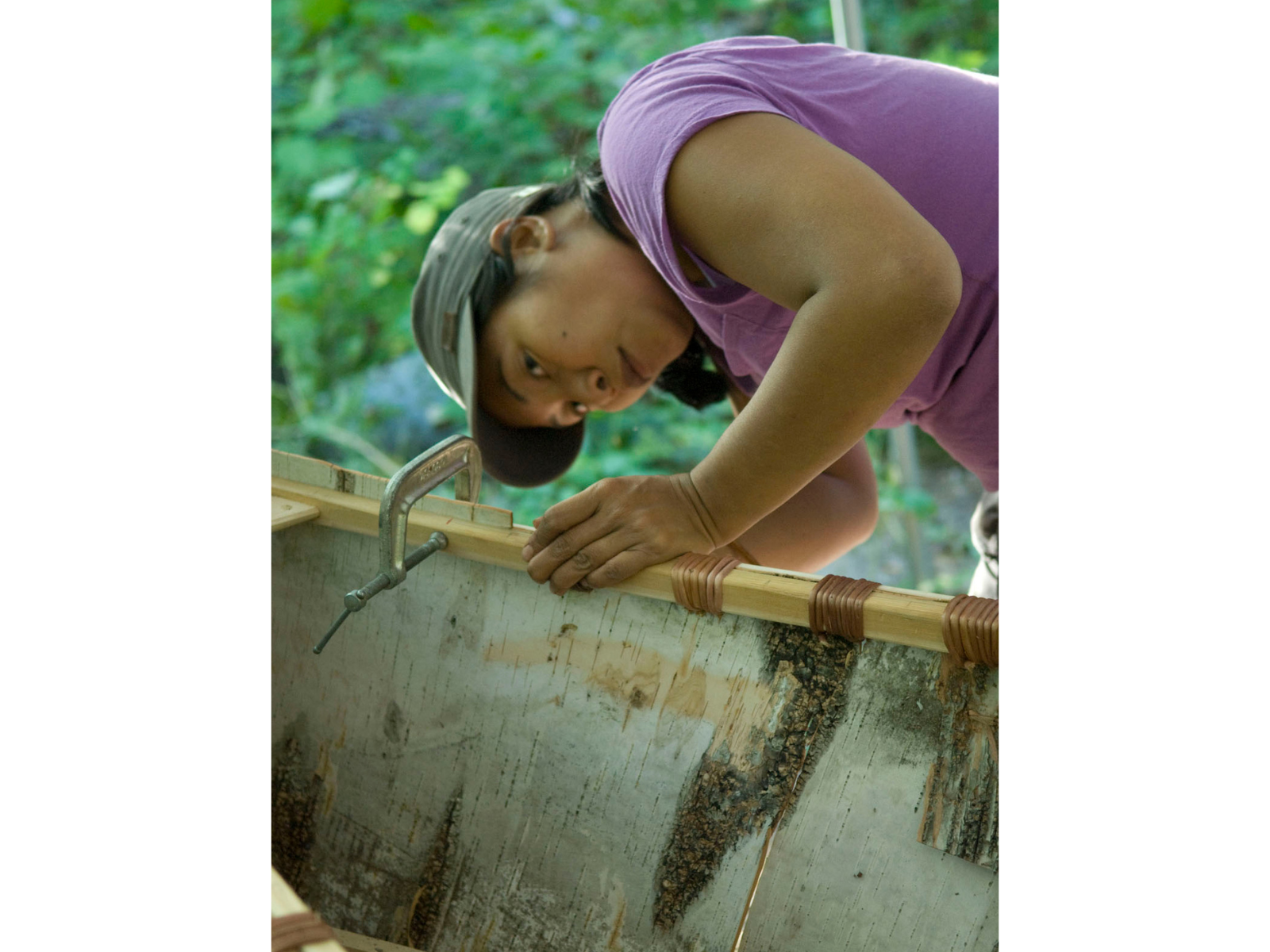
Myra Sewing the gunwales.
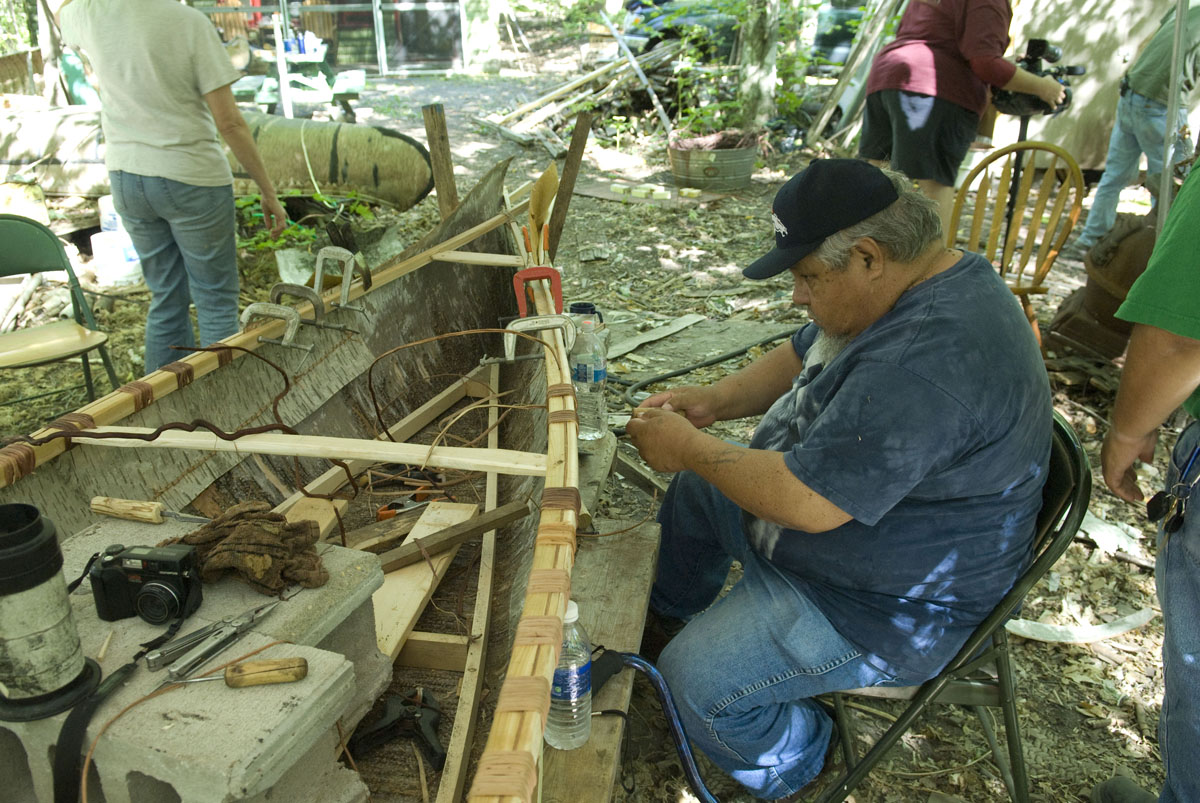
The inwales, outwales and gunwales caps were split from a 22 foot long cedar pole. The 40 ribs were made from 3 – 5 foot sections of large cedar logs (60 inches in diameter). Five thwarts needed for the canoe were made Black Ash. Myra and I also made over 80 iron wood pegs for pining the inwale, outwale and gunwale caps together.
The canoe started as flat sheets of birch bark and each day began to the canoe looked more and more like a real canoe. By the end of day 5 the canoe was completely sewn and ready for the ribs and planking.
Image: Jim Jones Senior helps to sew the gunwales.
